CELTIS **
Celtis
L., Sp. Pl. 1: 1043. 1753; Gen. Pl. 5: 382. 1754; Hutch., Gen. Fl. Pl. 2: 147. 1967; Fl. China @ eFloras.org 5: 15; Fl. North Amer. @ eFloras.org vol. 3; Akhter, Fl. Pak. @ eFloras.org p. 8.
Trees or shrubs, deciduous or evergreen, with smooth grey bark. Winter buds with scales or not. Stipules 2, free, narrow, linear, caducous (or terminal ones persistent and enveloping winter buds). Leaves simple, alternate, petiolate, usually 3-nerved, with unequal bases, secondary veins anastomosing before reaching margin. Flowers monochlamydeous, small, bisexual or polygamous in axillary or lateral clusters on branches of current season. Male flowers in axillary or lateral cymes; fertile flowers (female or bisexual) solitary, usually borne apically in polygamous inflorescences. Perianth 4 or 5, basally slightly connate, imbricate or valvate, caducous. Stamens equal in number to tepals, basally adnate to tepals; filaments short, erect, surrounding a hairy disc. Carpels 2, syncarpous; ovary superior, sessile on a hairy disk, ovoid, 1-locular with solitary ovule, ovule suspended; style short; stigmas 2, divergent, elongated reflexed lobes, lobes usually entire (or 2-cleft). Fruit a small ovoid or globose drupe, endocarp hard and stony, smooth or rugose.
69 species
** Also treated by some under the family Cannabaceae
Celtis tetrandra
Celtis tetrandra
Roxb., Fl. Ind., ed. 2: 63. 1832; Fl. China @ eFloras.org 5:18; keralaplants.in
Fairly large deciduous tree; bark bluish-grey, smooth, branchlets pubescent when young; lenticels few or none. Stipules ca. 7 mm long, narrowly lanceolate, caducous, never enclosing buds. Leaves alternate, petiolate; petiole 6-13 mm long, broadly sulcate, puberulous; leaf blade ovate-elliptic or ovate-lanceolate, 5-13 cm x 2.5-5.5 cm, more or less coriaceous, abaxially puberulent when young, base oblique with one side +/- rounded and other cuneate, margin entire or obtusely serrate in upper half, apex acuminate to shortly caudate-acuminate; leaf blade 3-nerved at base, prominent; secondary veins 1-4 arising from each side of midvein, pinnate, intercostae usually scalariform. Flowers ca. 4 mm across, greenish, male, female or bisexual. Male Flowers: Mostly in lateral fascicles or on short racemes; pedicels short to 2.5 mm long. Perianth 4, connate at base, lobes 1.5 mm long, obtuse, concave, margin ciliate, valvate. Stamens 4, opposite the perianth lobes, basally adnate to tepals, short, erect in bud, surrounding woolly torus; during anthesis, filaments nearly equal to tepals; anthers bithecous, longitudinally dehiscent, slightly exserted beyond tepals. Female and Bisexual Flowers: Axillary, 1-3 together, in the axils of upper leaves of branches of current season; pedicels 7-10 mm long. Tepals and stamens as in male flowers (stamens absent in female flowers). Carpels 2, syncarpous; ovary superior, sessile, obovoid, more or less glabrous, 1-locular, ovule solitary, apical, pendulous; style short; stigmas 2, divergent elongated, reflexed, plumose. Fruit a drupe, drupes usually solitary, +/- globose, ca. 8 mm x 8 mm, smooth, pedicels up to 2.8 cm long, slender. Stone reticulately rugose.
Common Names: Eastern Nettle Tree; Khirk (Hindi)
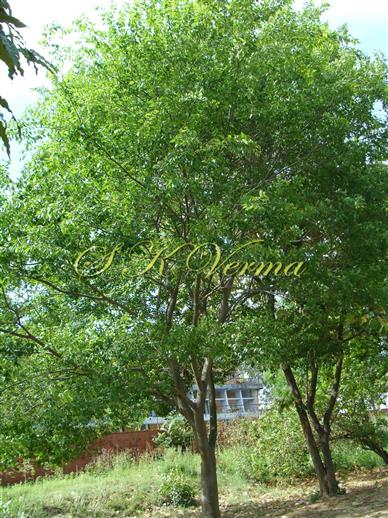
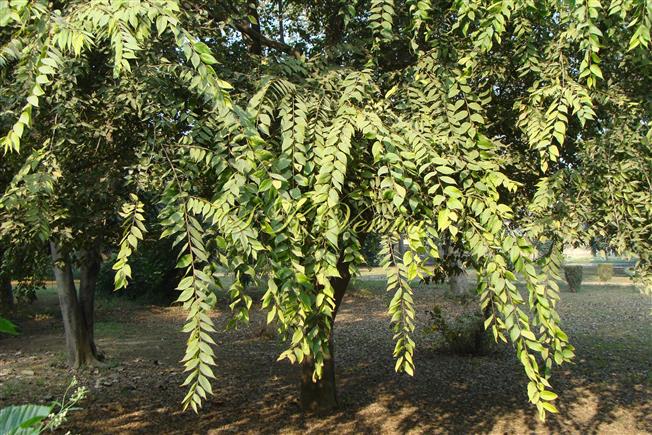
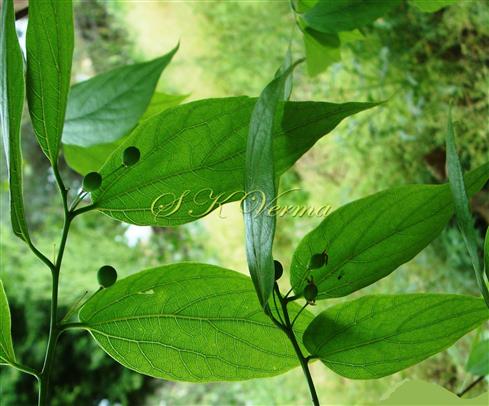
-DSC07108A.jpg)
-DSC06026.jpg)
.jpg)
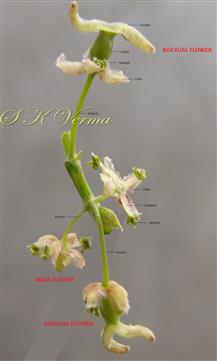
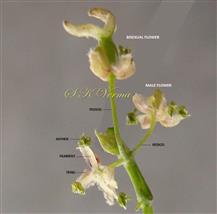
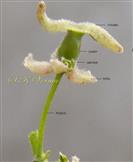
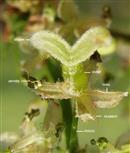
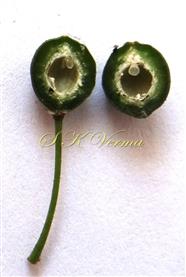
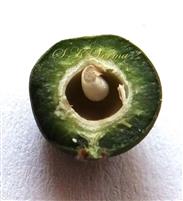
-6419.jpg)




-DSC07108A.jpg)
-DSC06026.jpg)
.jpg)






-6419.jpg)